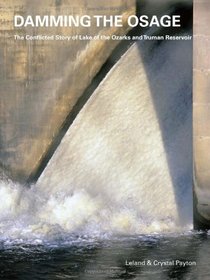Search -
Damming the Osage: The Conflicted Story of Lake of the Ozarks and Truman Reservoir
Damming the Osage The Conflicted Story of Lake of the Ozarks and Truman Reservoir
Author:
Only fragments remain of the native prairies of the upper Osage watershed. It has been two centuries since the warrior culture for which the river is named, and who maintained the buffalo grasslands by fire, was pushed west by displaced eastern tribes and land-hungry Americans. Two high dams have turned the main stem of the river into huge reser... more »
Author:
Only fragments remain of the native prairies of the upper Osage watershed. It has been two centuries since the warrior culture for which the river is named, and who maintained the buffalo grasslands by fire, was pushed west by displaced eastern tribes and land-hungry Americans. Two high dams have turned the main stem of the river into huge reser... more »
ISBN-13: 9780967392585
ISBN-10: 0967392586
Publication Date: 11/1/2012
Pages: 304
Edition: First
Rating: ?
ISBN-10: 0967392586
Publication Date: 11/1/2012
Pages: 304
Edition: First
Rating: ?
0 stars, based on 0 rating




